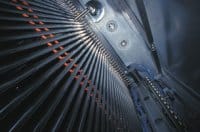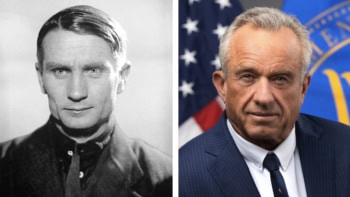
By Hamish Johnston
Physicists were buzzing last month when scientists at the OPERA experiment in Italy hinted that neutrinos may move faster than the speed of light. If you missed all the excitement, the experiment measured the time it takes the particles to travel 730 km from CERN in Switzerland to Gran Sasso in Italy – and came up with a relativity-defying result.
Although there was much coverage of the “Was Einstein wrong?” sort in the popular media, I suspect that most physicists were quietly thinking “there must be something wrong with the experiment”. Others have been more vocal, with nuclear-physicist-turned-TV-presenter Jim Al-Khalili famously declaring that he will eat his boxer shorts if it turns out to be true.
Well, it looks like Jim won’t be tucking into his briefs any time soon because new data from OPERA’s sister experiment ICARUS have failed to yield any evidence for superluminal neutrinos. More precisely, ICARUS has shown that neutrinos travelling from CERN to Gran Sasso do not emit electron–positron pairs. Emission of such pairs is expected if the neutrinos travel faster than the speed of light, according to a preprint published recently by Andrew Cohen and Sheldon Glashow.
The emission of electron–positron pairs would have a noticeable effect on the energy distribution of neutrinos arriving at both OPERA and ICARUS, but now neither experiment has seen evidence of it.
OPERA’s superluminal result is based on the time it took for neutrinos to travel the 730 km – and now this speed measurement contradicts both the OPERA and ICARUS energy-distribution measurements.
I should point out that the Cohen–Glashow paper has yet to pass peer review (as far as I can tell). However, the preprint seems to meet with the approval of physicists who have blogged about it – and the ICARUS collaboration repeatedly uses the word “must” to describe the effect. And the fact that one of the authors is a Nobel laureate must give it additional kudos.
If you haven’t yet had your fill of superluminal neutrinos, the BBC will be airing a television programme on that very subject tonight. It will be hosted by the mathematician Marcus du Sautoy and you can find more details here.
UPDATE: The Cohen-Glashow paper has been accepted for publication in Physical Review Letters.



